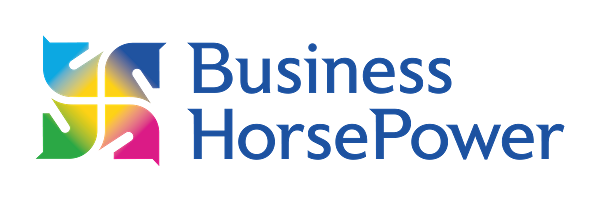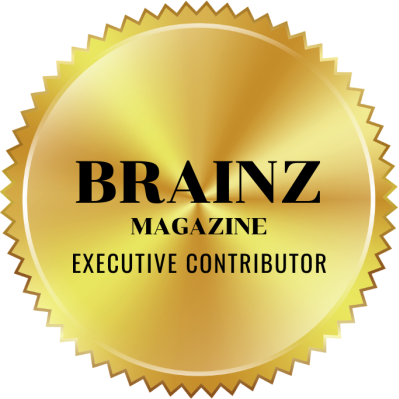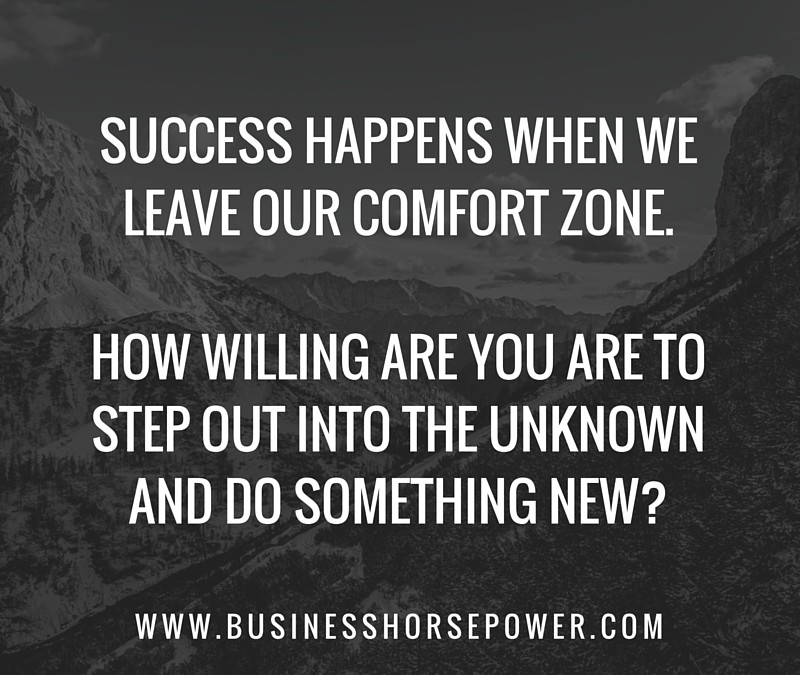
by Julia Felton | Jan 27, 2016
One of the things I always challenge my clients to do is to step out of their comfort zone and try something new. For many people just coming to an experience with the horses is the start of that stretch. In fact sometimes just the mere thought of doing this can send people into a tail spin.
That was certainly the experience of some of our clients earlier this month. As soon as they learnt that the next module of their leadership programme was with horses all kinds of doubts and fears set in. To the extent that three people actually cancelled their attendance at the event.
It always surprises me the reaction of people to the leadership work with horses. Some totally embrace it and see the experience as a stretch and to try something new outside their comfort zone, whilst for others it puts them into a state of fear and panic.
The one thing that I do know from personal experience is that unless we challenge ourselves to do something new, we never grow and develop. We never expand and change.
Now I also appreciate that everyone’s comfort zone is different and as a skilled facilitator we need to manage the experience and so not take people into a place of paralysis and fear, but rather move them forward step by step so that their own personal comfort zone expands. Because ironically what happens is that if we don’t stretch and challenge ourselves our comfort zone becomes smaller and smaller.
Last night I stretched myself ou of my comfort zone by holding my book launch at the Institute Of Directors in London. I would describe myself as a pretty accomplished speaker but to be honest I have always spoken supported by a powerpoint presentation. Last night no powerpoint was allowed. When I first heard this I was afraid that I wouldn’t know what to say and momentarily thought about pulling out. But I didn’t. I “pulled on my big girl panties” and stepped into the spotlight. And you know what. With no notes to distract me I got really connected to my audience and delivered one of the best talks I have done in long time.
I am now so grateful for that experience as it has helped me prove to myself that I do not need the crutch of a powerpoint presentation to deliver compelling and inspiring content.
So what are you going to do today to step out of your comfort zone and do something different?. I’d love to hear about it on the facebook group.
Have an inspired rest of the week.
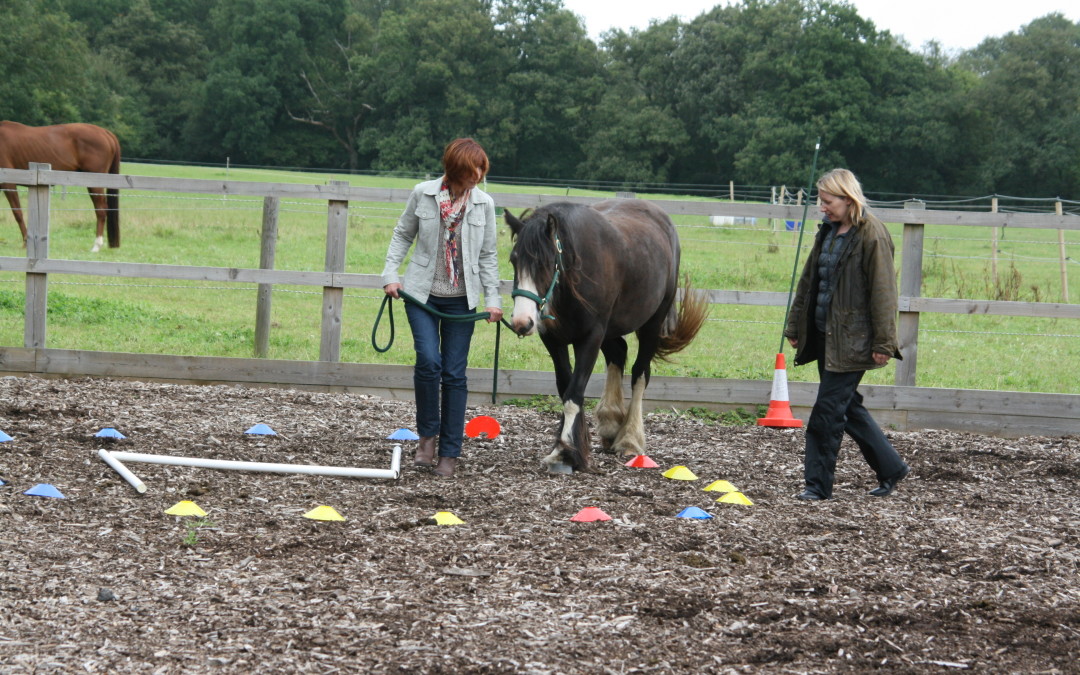
by Julia Felton | Dec 13, 2015
In a recent Fastcompany article 6 Ways Work Will Change In 2016 the author examines the traits that leaders will need for 2016. Specifically it cites:
“Leaders have traditionally been selected based on experience and company loyalty, but those leading today’s biggest organizations aren’t necessarily those who have spent the most time climbing the corporate latter. That’s because the very nature of management has drastically changed in recent years, resulting in a new set of expectations for those at the top.”
Furthermore Josh Bersin of Deloitte notes that “Most companies, even big companies, are much less hierarchical and much less top-down in their execution than they used to be. Leaders are finding that they have to be more inspirational, they have to be more collaborative……. the gap that’s being created is, ‘Who are the right leaders?”
So how do companies develop leaders for the next year who are more inspiring and collaborative?
I address this issue in my book The Alchemy of Change and this is what I say:
“I do suggest that all my clients engage in learning leadership from horses. Now some of you might think that this sounds strange but as we have seen you can’t learn leadership in the classroom. It is an embodied process that can only be experienced through being. Partnering with horses allows people to experience first hand many of the qualities of how to lead with courageous impact. Horses teach us how to be authentic, trustworthy, present, pay attention and be respectful and responsible. Horses model for us how to collaborate and share leadership. They show us how to build relationships and live in harmony with a shared common purpose.
How specifically you be a leader and how you act is as unique and personal to you as your DNA. How I lead is not how you might lead. Our differing perspectives, experiences and frame of reference make learning how to lead a very personal experience. There is no manual to follow, no one formula to follow. The one thing I do know however is that horses will provide you with real honest feedback on how effective your leadership has been. If you are not compelling and inspiring they simple won’t want to be with you, and unlike team members they will vote with their hooves and not engage. This is the power of learning leadership with horses as it allows you to explore what approaches work and which don’t and then to calibrate and try something new based on the feedback. Just like your team members’ horses are individuals and each one needs to be led differently. If you don’t believe me just try it and experience this for yourself.”
So what will you do differently to develop your leadership skills in 2016? If you’d like to really step out of your comfort zone and trying something innovative and new that really yields results then I suggest that you connect with me so that we can explore what is the best option for you.

by Julia Felton | Nov 12, 2015
At a time when training budgets continue to be under pressure I am always amazed by the fact that few organisations are prepared to look out of the box for more innovative solutions to developing their talent. In the 2015 Deloitte Human Capital Survey 78% of companies cited leadership development as their biggest challenge. And yet we continue to teach leadership in the same way and wonder why we keep getting the same results. How mad is that!
Einstein summed it up well when he said : “The definition of insanity is doing the same things over and over again and expecting a different result” and yet this is what many companies continue to do when it comes to training.
I would like to propose a different approach, one that is making a profound impact and generating significant ROI for its attendees. It involves getting out the classroom and learning in a different way. Experiential learning is so effective because it’s a process of learning by doing. What makes it unique is the opportunity to learn from your own experience, and no one else’s.
Let’s take a quick look at some of the most important reasons why experiential learning is effective:
- Sense of equality – All participants in an experiential learning program are equal in terms of their knowledge and skills with regard to the tasks at hand. This creates a sense of equality among the participants, which is favourable for effective learning.
- Collaborative environment – Experiential learning programs help you learn how to quickly build a relationship. When resolving unfamiliar challenges collaboratively with a group of unfamiliar people, you quickly find ways to build relationships. This strengthens your communication, collaboration and interpersonal skills.
- Unfamiliar situations – In experiential learning, you are taken out of your comfort zone. When handling unfamiliar challenges, you learn how to focus on task and process related themes, and how to organize yourself around a challenge. Learning becomes more effective because most of your prior experiences are irrelevant in the present context.
- Meta learning – The ability to review your process of learning is referred to as Meta learning. When you participate in experiential learning programs, you get an opportunity to improve your Meta learning skills. With improved focus on your process of learning, you get the space and flexibility to review your leadership skills, problem solving skills, communication skills and so on.
- Crisis management in safe environment – You learn how to manage crises in an environment that is safe and supportive. This enhances your crisis management skills in real life situations.
- Whole body learning – Rather than only listening and viewing, whole body learning method requires a learner to perform physical movements. Experiential learning incorporates kinaesthetic learning methodology, thus ensuring holistic improvement of your mental, behavioural and physical strengths.
I think Confucius summed up the benefit of experiential learning when he said: “I hear and I forget. I see and I remember. I do and I understand.”
There are many types of experiential learning programmes but to my mind the most cost effective and impactful leadership programmes are those with horses. The horses provide unbiased feedback on how the delegates show up. Are they inspiring, compelling and energetic leaders who the horse (and other team members) would want to follow, or do they lack focus, direction and are generally unsure of themselves.
Since horses are masters at reading body language they challenge the delegates on how congruent and authentic they are. Are their words and deeds aligned so that trust can be built? Do they feel empowered and listed to? Through a series of exercises the horses show delegates how to BE a leader rather than DO leadership and thats something that can’t be learnt in the classroom.
So if you are looking to develop your leadership skills, why not give us a call, and we can explore what is possible.

by Julia Felton | Oct 14, 2015
Almost a century after horses were the almost only source of transportation on our streets it is surprising that in this digital age, we still measure the power of a car engine in ‘horsepower’. Even today, when probably the only time most people will see a horse in on a Saturday afternoon at the races, horses still hold a fascination for everyone. For author and business consultant, Julia Felton she believes we can learn so much from them that every business should have one on its payroll.
Julia is the Herd Leader of Business Horsepower Ltd, a company that grew out of her realisation that the horses she keeps on her land in Yorkshire had become her best coaches in teaching her business and life lessons.
According to Julia ” I realised that my herd of horses live in a state of harmony. They act as a single unit and there is collaboration and shared leadership. A wild horse simply cannot afford to live alone, it is simply too dangerous and so the herd band together with a shared purpose of survival. To act in silo groups would be detrimental to the overall success of the herd, and yet, in the corporate world, that is what I witness in business day in day out.”
Drawing from this, and her extensive corporate experience growing effective teams at Andersen and Deloitte, she has just published a new book ‘The Alchemy of Change in which she reinvents ancient wisdom, and the forces of nature, to unlock the potential of leaders and teams.
in the same way that nothing happens in nature on its own, she has created the concept of the Joined-up business. Using an impressive array of tools, strategies and processes Julia helps the reader to unleash their powerful potential and “grab the reins” of their business and inspired everyone in it to work together with a singular purpose.
By each individual focusing on their unique natural strengths individuals, teams and organisations are able to become more engaged and motivated. Collaboration reigns and competition is banished. The result is increased productivity and profitability as twice as much is achieved with significantly less effort.
Her innovative coaching and development programmes, for individuals, teams and organisations, are inspired by nature and her herd of horses. She is committed to creating positive transformation and getting outstanding results through streamlining and systemising businesses so that all the aspects of the business are aligned and no resources are wasted.
During her 12 year career at Andersen and Deloitte she was responsible for developing a business from an idea on a piece of paper to creating and then building a million pound business unit, that became firmly established as the global market leader, providing business intelligence solutions to the hospitality industry. Her unique ability to work at both a strategic and tactical level means that she is sought after as a high performance consultant, mentor and coach.
Julia holds a degree in Hospitality Management and is a member of the Chartered Institute of Marketing and the Institute of Leadership. She is also a Fellow of the British Association of Hospitality Accountants. As a Master Coach and qualified NLP practitioner and trainer she enjoys mentoring young entrepreneurs and recently became a Young Enterprise Coach. She is also a Talent Dynamics Performance Consultant, a Trusted Sales Dynamics Coach and a Certified Money and Marketing Business Coach.
Julia’s passion is horses and as a natural horsemanship coach and a Licensed HorseDream Partner she often incorporates sessions working with the horses into her Business HorsePower leadership and team working programmes and Unbridled Success Retreats.
Julia is an accomplished international speaker and in addition to The Alchemy of Change: Ancient Wisdom Re-invented To Unleash The Potential of Leaders and Teams she is the author of Unbridled Success – How the Secret Lives of Horses Can Impact Your Leadership, Teamwork and Communication Skills. Her keynote speech Straight From The Horses Mouth: Leadership Lessons From The Barn To The Boardroom is provocative and thought-provoking, making her a sought after speaker.
Julia will be holding a book launch and masterclass event tonight – Wednesday 14th October – from 7-9pm at Waterstone’s Leeds.
For press, media and general enquiries please connect with Julia via connect@businesshorsepower.com. We can’t wait to hear from you.

by Julia Felton | Jul 1, 2015
“We can build our leadership upon fear, obligation, or trust. However, only a foundation of trust results in the collaboration and goodwill necessary to achieve our peak performance.”
These words, from organizational design expert Roger Allen, could hardly be more succinct in expressing the central role that trust plays in building and leading high-performance organizations. What is also very apparent to me is that this same principle holds true in developing relationships with my horses. Sure I could intimidate my horse, or force him, but in my experience this might simply get short term gains. Developing a meaningful relationship means that we need to invest in developing trust. It’s not the quick fix that many of us are looking for nowadays but the rewards are truly worth it.
With the integrity of our business leaders under such a microscope these days, it’s valuable to take a moment for a refresher on trust in leadership. For integrity, though critical to trust, isn’t the only element of a trust-based management style. According to Seattle-based management expert Stephen Robbins, trust is based on four other distinct elements in your relationship with the people you lead:
- Competence. At first this may seem strange—after all, can’t incompetent people be trusted? Of course, but not if you want to lead. Leaders are held to a different standard, and part of what your team trusts is that you know what you’re doing. It comes with the territory.
- Consistency. This is one of the most pragmatic elements of trust. If your team knows what you stand for, then they will believe that you will react in a predictable way to certain situations. Over time your consistently expressed values become the shared values of the team. Some charismatic leaders may purposely act unpredictably to “shake things up,” and they may well be wildly successful. But they won’t necessarily be trusted.
- Loyalty. To a certain extent, your team can only trust you to the degree you are committed to their success and well-being. Max De Pree, the legendary CEO of Herman Miller and champion of the “servant leader” concept, puts it this way: “The leader’s first job is to define reality. The last is to say thank you. In between the leader must become a servant and a debtor.” This servant/debtor relationship to your team is one that strongly conveys your loyalty to them.
- Openness. Trust is ultimately the characteristic of a relationship, and it is through its relationship with you that your team expresses its trust. Openness is a cornerstone of the ability to build these relationships. If your team can’t get to know you, then they probably can’t get to trust you, either. With openness comes the requirement for a certain vulnerability: in this arena, you will generally have to “go first” by reaching out and creating such relationships.
By investing in building and strengthening these qualities in your leadership, you will be steadily reinforcing your trust relationship with the people who work for you. Those relationships, in turn, become the foundation for building a high-performance organization, particularly in times of change and stress, when people tend to rely upon their personal relationships. If your team trusts you in good times, they are even more likely to stand with you when the times turn challenging.
If you are interested in learning how to develop trust in your organisation to drive business performance then please connect with me to schedule an Unleash Your Profit Potential Strategy Session.
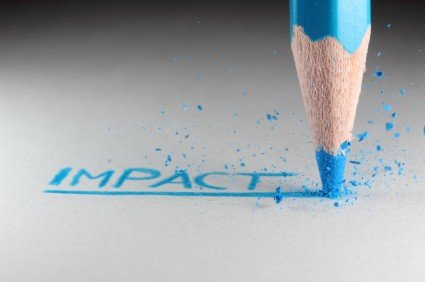
by Julia Felton | May 11, 2015
If leaders are to be successful they need to be able to influence and impact others. But what is impact and how is it created. My definition of personal impact is ‘The ability to command your audience, aligning your physiology and emotions to create the impact you intend.’ If you are able to do this it will automatically affect the tone of voice you use.
Why Physiology and Emotions?
In my workshops I often refer to the Mehrabian model on the impact of communication where 55% of what we communicate is through our physiology or our body language. This can be anything from facial expression, the way you stand or sit and breathing. It’s not about size, height or physical beauty. 38% of what we communicate is through tone of voice, which includes volume, timbre, speed, rhythm and the energy behind it.
Both tone and physiology are affected by our emotions. If you are fearful, happy, stressed it will show in both and people unconsciously read these. This leaves 7% of the impact in the words you use. It’s important to recognise that all 3 elements are significant and have to be aligned. Saying you are happy when your voice tone and body are clearly saying something different gives an incongruous message, as you are not being authentic and people immediacy recognise this. Admittedly sometimes this acknowledgement is not even conscious. When others experience us as inauthentic and incongruent it makes them wary of us as they are not sure what to expect and in a sales situation people will not buy from you.
So how do you create an impact?
The best way to create the impact you desire is firstly to be clear on what impact you want to create. This mean being authentic and having clarity on the outcome you want. Being laid back is great if that is the impact you want to create but this might not be the right approach if you want people to listen to your message and remember it.
Remember you create an impact from the moment you walk in a room or someone sees/hears you for the first time. Here are some simple steps you can begin to practice to create the impact you desire.
- Ask yourself – what is my intention in the meeting? What result do I want? What atmosphere do I want to create? Having got clarity on this;
- Ask yourself – how do I need to be to create/deliver this? What do I need to embody? Visualise how you will be walking into the room and interacting with others
- As you do this go through a basic centring practice:
- Stand with your feet hip width apart, balanced equally on each foot with your knees relaxed.
- Lift your rib cage slightly and relax your shoulders so you stand tall yet relaxed.
- Lift you head a look straight ahead, relaxing your jaw in the process.
- Now, if your breath hasn’t already shifted breath into your abdomen.
- Notice the shift in your body and your breath and the energy you need to create and project.
- If possible practice how you need to be.
Now, after the event reflect:
- Did you create the impact you wanted?
- If yes what did you learn that you can repeat or do more of?
- If not what did you notice about how you were? When did you ‘lose it?’
- What do you need to practice to do better next time?
- If possible get feedback.
In my experience the times I fail to make the impact I desired occur when I stop being authentic and try to be someone else. When I lack authenticity it becomes difficult to connect with the other person and communication channels become blurred. One of the best teachers I have ever come across when it comes to learning how to create an impact and be authentic are my horses. They never fail to give me honest feedback.
So if you are interested in developing your authentic communication skills I invite you to join me for the upcoming Art of Authentic Communication Workshop where my herd of horses will be your teachers.
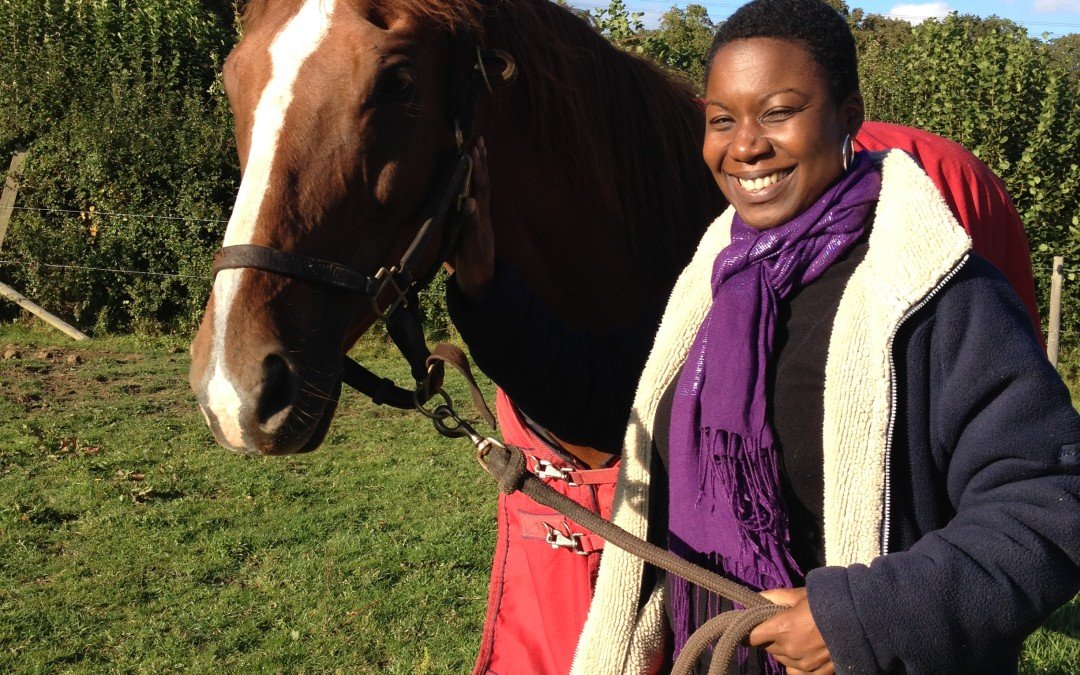
by Julia Felton | Apr 11, 2015
Happy 15th Birthday to Coach Charlie!.
As I’ve been watching the adverts for the upcoming Grand National this year, I couldn’t help but think about what happens to all those race horses after their competitive racing life is over. Although there are no comprehensive statistics on the subject it is estimated that “many thousands (of horses) are slaughtered annually in the UK and Ireland, after failing to make the grade as racers or when their racing days are over.”
There are a number of great establishments such as Retraining Of Racehorses (RoR) that seek to help race horses make the transition from the track into becoming a domesticated ridden horses but what about the race horses that are no longer rideable. Unfortunately in our society many of these find themselves on the way to the slaughter house.
This was the case with Charlie (aka Caymen’s Gift). Originally he came into my life as a riding horse but it soon became apparent that years of racing had taken their toll on his body physically and that he was experiencing arthritis and back pain. As stoic as he was he had kept on working despite being in some degree of pain. After some extensive veterinary investigations he was diagnosed as being lame on three legs and having a sore back. His riding days were over and to many people his usefulness would have come to an end, but Charlie was fortunate.
In the intervening years I had stumbled across the concept of coaching with horses. This is where people partner with horses to help business owners develop key leadership, team-working and communication skills. After 20 years of working in the corporate world and with a love of horses, this was the perfect new career for me and Charlie was a perfect coach for this work. Accustomed to being around people he easily made the transition into the Business HorsePower team and is now one of my lead coaches.
Since no riding occurs in my programmes Charlie is able to continue to contribute in a really positive way to society. Every year he helps business owners and their teams gain 100% unbiased instant feedback on their performance which is hard to ignore. He senses whether you are congruent and aligned in heart, body and spirit and has an innate ability to see deep into your soul and challenge those beliefs and false self-images that our ego puts up to protect us. He is also a master at ensuring you communicate clearly and authentically because if you don’t show up as a compelling leader him he will just ignore you and “go on strike”, just as one of my clients experienced the other day.
If you’d like to come and learn from Coach Charlie how to lead and inspire others, develop trust through the art of non-verbal communication and become a true leader then please reach out to us at connect@businesshorsepower.com and join the many others that Charlie has helped.
You can also find further information here.
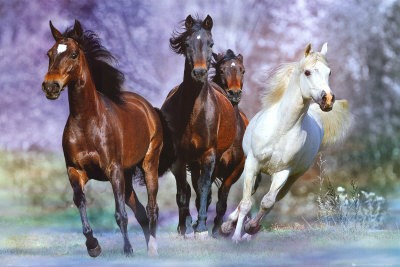
by Julia Felton | May 27, 2014
So bringing a horse in the workplace might be a bit of a stretch, not to mention a little messy! However, the growing field of emotional intelligence (EI) and neuroscience, highlights the need for leaders to develop solid interpersonal and relationship skills in order to become proficient in harnessing the complexities of the modern world.
In fact a recent report by Deloitte Consulting LLP (my old employer!) entitled Global Human Capital Trends 2014 reveals that 86% of companies cite developing leadership capability as the top challenge they are facing, alongside employee retention and engagement, the re-skilling of HR and talent acquisition.
So why are horses such great teachers of leadership? To my mind it is because leadership is fundamentally changing. The old paradigm of command and control will no longer work in the workplace. We are leaving the information era and entering the collaboration era and horses are masterful at showing us how to work together in unity and harmony to achieve results. They also engage actively in shared leadership which will become more prevalent as we move forward.
With the avalanche of information out there it is simply impossible for one person to know it all. Everyone in the team needs to share responsibility for ensuring that the business meets its goals. And this this is what the herd models for us so well. They share the same vision for survival and safety and each herd member is responsible for looking out for danger. They have to be alert at all times and be focused on the goal. Any horse that fails to pay attention is reprimanded and often driven out of the herd for a short period of time. (Trust me it is fearful place for a horse to be alone and excluded from the herd with no-one to share the burden of responsibility with.)
And yet this is what I witness in organisations a lot, except for it is the leader who often feels alone and isolated from the rest of the team. They are left on the fringes and are not connected to the rest of the herd. The result is mis-communication, feelings resentment and frustration as goals are not met.
So how does Horse Assisted Coaching work and why is it so powerful?
In our new connected era what is apparent is that success does not come entirely from what you do – although taking action is always important – but it comes from who you are being. How are you showing up in the world? What type of leader are you? Horses teach us these important soft skills that are vital for business success. In fact I estimate that 80% of business success comes from how you show up as a leader for your business. Are you aligned and congruent? Are you passionate about what you are doing? What beliefs do you hold about success?
Horses help you develop these softer skills controlled by the limbic system of the brain (the emotional centre). Horses communicate mainly via body language and operate solely from their emotions. They don’t care if you are the CEO or the Office Junior, what they care about is what you are bringing to the relationship. Having a 600lb horse in front of you tends to bring up ‘real’ emotions for both parties! This could be known as ‘real-play’ rather than ‘role-play’.
As a participant in a Horse Assisted Coaching session you will performs certain ground activities which will evoke a variety of thoughts (productive and self-limiting) which in turn produce certain emotions (feelings), this is then mirrored in your body language, which the horses pick up on (from up to 1km away!). As the horses are at liberty (free of reins, head gear and rider control) they have the option to react naturally to the participant. This is the moment of instant feedback from the horses mouth!!.
Participants are able to try out different approaches and ways of managing themselves and the other (in this case the horse) in each situation, giving them an opportunity to experiment with the most effective behavioural response (adaptive behaviours). As success is found, confidence builds and links are made to life outside the paddock, which then raises the probability of using the new adaptive behaviours in the workplace.
All these programs are delivered in a non-threatening environment where the focus is to support each participant to achieve better outcomes in their interpersonal interactions and develop an awareness of themselves, others and the complexities within the workplace.
Business Horsepower combines leading theory and profiling tools with innovative Horse Assisted Coaching in order to deliver the most effective emotional intelligence development programs available and create more leadership bang for your buck!
Put simply you get more effective results when you use horsepower!
Note: If you are based in the UK talk to me about some special funding that is available for developing leadership skills in your company.
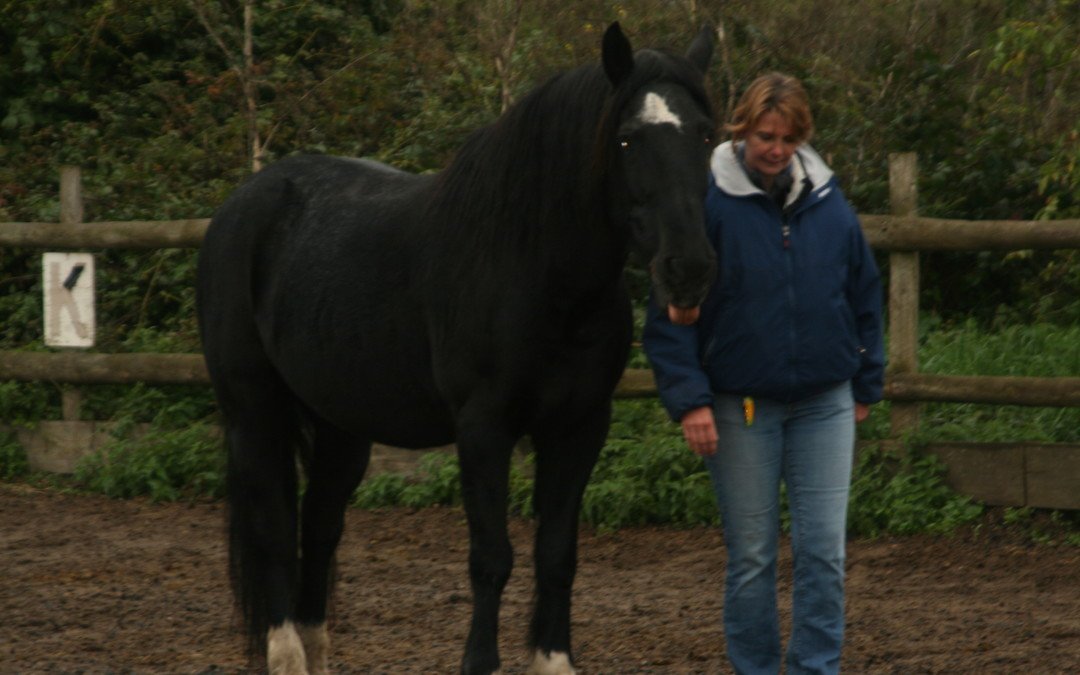
by Julia Felton | Apr 22, 2014
Managers (… and others..) can learn a lot during horse – assisted training. Approaching horses, watching their reactions to our behavior, touching them, smelling them, leading them with or without a rope – this is a very special experience which brings people “down to earth”. Contrary to schooling in classroom where participants are mostly rational decision makers the context of horse – assisted education opens the emotional side of people. The authentic feedback of horses provokes reactions and insights for the participants which touches them deeply. That’s why horse assisted education is a very valuable completion of classroom seminars. In role plays in the classroom people often play a role – they are not authentic and are not open to really face their personal problems and challenges.
The following case study will highlight what I mean by integral leadership training: I will tell you the story of Lukas, a participant of a two day seminar: “Successful conflict resolution”, followed by a workshop with horse – assisted education.
My boss does not pay much attention to me… how can I attract more attention and recognition ?
Confession in the classroom
Lukas was one of nine participants with banking and insurance background who attended the seminar: “Successful conflict resolution”. At first sight he appeared to be a nice guy, polite, very intelligent (classical scholar with double PhD), very interested to communicate with the other participants, very engaged during the exercises and role plays. Overall, he left a rather shy impression, which showed also in his stooping posture.
At the end of the first day, Lukas had gained enough confidence to tell us about his actual problem at his workplace. He was assistant of the management board of a bank and his task was delivering profound analyses and background information – he told us how he was fascinated by his task – he was sure he could deliver competent information based on his long experience in the field. Unfortunately, he was seldom praised – even worse, his boss, an ambitious young woman, only used his work to create an image for herself. He admitted that he was now no more motivated.
First encounter with the horses – his favorite horse being Santana
It is always very interesting to watch the participants whom you know from two days classroom seminar in a totally different environment during their first encounter with the horses. Most of them are really looking forward to the new experience. Others are sort of nervous to meet the horses and ask themselves if they will be able to lead such a big animal. A few are in fear of horses and tell me in advance that the observer role will be alright for them ( in most of the cases they change their mind and will ask me “What do you think, if I try myself ?”…).
Lukas was very eager from the very beginning – he told me that he didn`t have any specific experience with horses but that he was always fascinated by these proud and elegant species.
During the first exercise participants are watching a group of horses which play around in a riding arena. This exercise is useful to get a first impression of the horses. The task is to watch the behavior of the horses very carefully – are there any differences in character? – which horse attracts me most? During this exercise every participant can choose his favorite horse for the following exercises. Lukas` choice was Santana, a very elegant mare with beautiful expressive movements. I asked him why he chose Santana? “That is very clear, I am fascinated by her elegance and assertiveness – did you see how Santana reacted when this brown little pony wanted to bite her? … she just kicked out at him. I also chose Santana because of her gentle expression on her face..”
Lukas and Santana – not a dream team yet
The exercise is to lead the horse on a rope, individually. The participant has to walk through different obstacles with the horse: turn around poles, pass through small obstacles, walk over tarpaulins on the floor. Lukas was very eager to do his job with Santana – his eyes sparkled like a little child when he took the leading rope of Santana. Only seconds later the expression of his face changed dramatically: Santana was not willing to follow him. He tried to motivate her by gently moving the leading rope.. no chance – he did not know what to do. He tried some other timid movements, without success. He tried to talk to her – no chance – discouraged he watched the group.
I asked him: ..” Do you think the horse knows, what you want from her?” Lukas seemed to understand.. “ok, I will show her what I want.. I will take a leading position, walking in front of her”…with timid movements he made some steps forward – seemingly not convincing enough. Meanwhile, Santana took a very uninterested stance and did not move. Poor Lukas was in a quite desperate state … I asked him: .. “Do you think the horse can recognise your full presence and determination?” Lukas seemed to think about this and suddenly changed his posture, he appeared much more focused now and -.. no surprise.. Santana started moving and followed Lukas… up to the second obstacle where Santana stopped again. This time it was Lukas who gave the explanation himself: “I can tell you why she stopped.. I was very uncertain if she would pass through the second obstacle … how can I take a leading position when I am uncertain and even in fear?” Now Lukas made his way with Santana very determined and we could watch how he enjoyed realizing how easily the mare followed him – finally Santana had accepted him as her leader.
Lukas` statements after his exercise
Deeply touched and still very excited, Lukas told us how he lived these 10 minutes: “In the beginning I was quite in despair– I approached Santana so gently but I could not gain her confidence – I had no authority. Only after I was totally despaired about the failed trials I had the energy to get through and to be finally respected. I am sure Santana could feel that I was clearly focused on reaching my target. I am very happy now that I succeeded to move her, finally – may be that is also true for my life: I have to stand up and signal very clearly to others what I want!”
What we learn from this story
Already in the classroom Lukas had told us from situations at his workplace where he was not much respected despite his broad experience and competence. The exercise with the horse showed him a way how he could increase his assertiveness.
Typically, Lukas chose the mare with a lot of expression, who showed that she is able to defend herself … characteristics Lukas would like to have himself, as well. During the exercises Lukas could learn about the importance of determined body language and clear target oriented action – there was a clear difference of his presence – before and after.
I am always impressed, how the lessons taught by horses are so easily accepted by people – may be people think, “Well, its only a horse which reacts.”
That is a real advantage of horse- assisted education – horses can mirror people the unvarnished truth and it is accepted quite easily. For me as a coach or another participant it often needs a lot of diplomacy and fine feeling to bring the message to the point.
Working with horses we are not only focused on rational thinking but we are also touching the emotional side of our participants. As newest research about limbic learning shows us the emotional involvement is a prerequisite for inner acceptance and finally for change of habits or behaviour.
Conclusion
Horse – assisted training is a most valuable completion of classroom seminars. To be efficient and sustainable the process of coaching and training is most important – horse assisted training must be embedded in a clear context: starting with a clear statement about the status quo and the personal targets of the participant. Previous classroom seminars often bring up important issues and targets for horse – assisted education. Another possibility is a well coached brainstorming with the group prior to the horse seminar. Most important is the reflection during the horse – assisted training session : by the participant himself, by the group and the coach. Videos are a useful tool to reinforce the reflection – nobody would be able to explain your non-verbal communication and appearance better then when you watch yourself on the video… ! Insight is one thing… change of habits another! So it is most important that the insight process is followed by a clear transfer plan – a plan which must be developed by the participant himself – because only he is able to know how far he is ready to initialize change– the coach is only the motivator of this process.
In the transfer process we have another valuable effect of horse – assisted education: the situations lived with horses leave a deep impression on the participants – the success stories with the horses serve as a clear anchor – the inner pictures of successfully leading Santana, Prince or whatever the name of the horse is, will encourage the participants to be more self – assured and determined.
By Dr. Barbara Gorsler, Management Trainer, Dietlikon, Switzerland
by Julia Felton | Oct 4, 2013
You know when you know something, but you don’t know it, that is what has been happening to me recently and it reminds me of the old Zen saying “To know and not to do is not yet to know”. I have known for some time about the importance of developing trust in relationships but it was during an exercise at a workshop with the amazing Jackie Lowe Stephenson and the Spirit of Leadership that the lesson finally landed.
Jackie and her husband Herb do the most amazing transformational work with horses and I was able to spend two days in the company of her and her inspiring herd of horses (which by the way also includes a Zebra, Holly). Jackie’s herd are masters at teaching you about building trust and connection and managing your energy. Approach them with too much energy and they will run away, not have the right intention and commitment, they’ll let you know. Need connection from a place of wanting and neediness and they will not engage with you. They taught me many lessons and reminded me, whilst we were hanging out in the fields, of why we need to lose attachment to the outcome and just be in relationship. Once you just be, rather than do, the relationship can begin.
So for me there are three principles that create the magic formula for developing a great relationship whether with your horse or with your work colleagues.
Bond + trust+ respect = foundations for a great relationship
Without these qualities in place any relationship will falter when put to the test.
My great AHA occurred when I was asked to lead my team with a blind fold on. As a walked around the arena I had to rely on my team-mates to keep me and them from walking into danger. It was a humbling position to be in knowing that I could not do it by myself and needing to trust my team-mates implicitly to keep me out of danger. And it was during this time that I realised that my horse must trust me implicitly. As I take my pony Bracken to new places she has never been before (she is figuratively blind folded) as she does not know what is round the corner. She has to trust me implicitly that I will not take her into a dangerous situation. Now I have spent nearly 21/2 years developing a relationship with Bracken and she does trust me but would another horse. It is an interesting thing to think about.
And for those of you in business I would extend this analogy to what is happening in the workplace. We are living in uncertain time. Change is happening rapidly and as a leader you are continually leading into the unknown (like being blindfolded). The landscape changes on a daily basis so you cannot know all the hazards ahead. All you can do is set the direction and then trust that others on your team will help steer you around the challenges that come up. But what if trust is lacking in your business and you don’t trust your team members. How challenging leadership becomes.
So today, whether at work or with your horse make sure that you create and develop a trustful environment by being true to your character and being competent in your job. Because as Stephen M.R Covey noted the key attributes of building trust are character and competence.
I’d love to hear on the facebook page about how you are developing trust in your relationships
